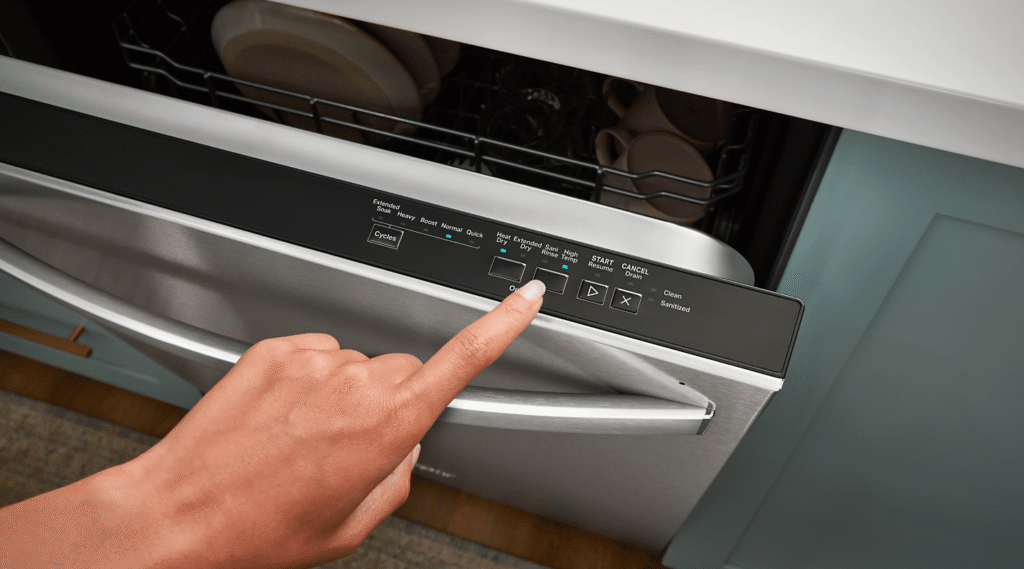
Ever find yourself needing to grab something from the dishwasher mid-cycle, or maybe you just want to check on your dishes? It’s natural to wonder if it’s safe to interrupt your dishwasher’s cleaning process. While opening a dishwasher during a cycle isn’t always ideal, some models offer features that allow for pausing or stopping the wash. This article will delve into the safety considerations and best practices surrounding interrupting a dishwasher cycle, empowering you to make informed decisions about managing your appliance.
This guide will explore the potential risks and benefits of interrupting a dishwasher cycle, explain the difference between pausing and stopping a cycle, and emphasize the importance of consulting your dishwasher’s manual for specific instructions.
Can You Interrupt a Dishwasher Cycle?
The short answer is: it depends on your dishwasher model. Some modern dishwashers are equipped with features that allow you to pause or stop the cycle mid-way through. This can be incredibly convenient if you need to retrieve something from the dishwasher, want to add a forgotten item, or simply need to interrupt the cycle for any reason. However, older models may not have these features and opening the door during a cycle could potentially damage your appliance or compromise the cleaning process.
It’s important to remember that interrupting a cycle can sometimes affect the final wash results. If you pause a cycle, it might resume where it left off, but there’s a chance that some dishes may not be as thoroughly cleaned if the water temperature drops significantly during the interruption.
Dishwasher Interruption Safety
While pausing or stopping a dishwasher cycle can be convenient, safety should always be your top priority. Never open a dishwasher door while it’s running unless absolutely necessary. The high-pressure water jets and hot water inside the dishwasher can cause serious burns if you come into contact with them unexpectedly. Additionally, opening the door during a cycle can disrupt the cleaning process and potentially lead to food particles or debris being sprayed out onto your kitchen floor.
If you must open the dishwasher during a cycle, always exercise extreme caution. Make sure the dishwasher is completely stopped before attempting to open the door. Use oven mitts or thick towels to protect your hands from hot surfaces and be mindful of any steam that may be escaping from the appliance.
Pausing vs. Stopping a Cycle
Many modern dishwashers offer both pausing and stopping functions. Understanding the difference between these two options can help you choose the best approach for your needs.
Pausing a cycle: This feature allows you to temporarily halt the dishwasher’s operation without completely ending the cycle. The dishwasher will remain in a standby mode, preserving the current water temperature and wash settings. You can resume the cycle at any time by pressing the “resume” button.
Stopping a cycle: This function completely terminates the dishwasher’s operation. The water pump will stop, the heating element will turn off, and the dishwasher will return to its standby mode. Stopping a cycle may require you to restart it from the beginning, depending on your model.
Dishwasher Manual Instructions
Your dishwasher manual is your best resource for understanding the specific features and functions of your appliance, including how to safely interrupt a cycle. Always refer to your manual for detailed instructions on pausing, stopping, or resuming a cycle. The manual will also provide important safety guidelines and warnings regarding interrupting a dishwasher cycle.
Conclusion
While it’s tempting to open a dishwasher mid-cycle when you need something or simply want to check on your dishes, remember that doing so can potentially damage your appliance or compromise the cleaning process. Modern dishwashers often offer pausing or stopping functions, allowing for greater flexibility and control over the wash cycle. However, always prioritize safety by consulting your dishwasher manual for specific instructions and exercising caution when interacting with a running appliance.
